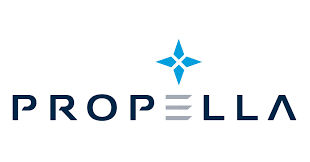预约演示
更新于:2025-05-07
Hernia, Inguinal
腹股沟疝
更新于:2025-05-07
基本信息
别名 DIRECT HERNIA、Direct Inguinal Hernia、Direct Inguinal Hernias + [85] |
简介 An abdominal hernia with an external bulge in the GROIN region. It can be classified by the location of herniation. Indirect inguinal hernias occur through the internal inguinal ring. Direct inguinal hernias occur through defects in the ABDOMINAL WALL (transversalis fascia) in Hesselbach's triangle. The former type is commonly seen in children and young adults; the latter in adults. |
关联
7
项与 腹股沟疝 相关的药物靶点 |
作用机制 SCNA阻滞剂 |
最高研发阶段批准上市 |
首次获批国家/地区 中国 |
首次获批日期2022-11-30 |
靶点 |
作用机制 TRPV1激动剂 |
在研适应症 |
最高研发阶段批准上市 |
首次获批国家/地区 中国 |
首次获批日期2003-01-24 |
960
项与 腹股沟疝 相关的临床试验NCT06894420
Comparison of Postoperative Analgesic Efficacy of Ultrasonographic Bilateral TAP (Transversus Abdominis Plane) Block and Anesthetic Infiltration Into Preperitoneal and the Surgical Field in Laparoscopic Unilateral TEP (Total Extraperitoneal) Herniorraphy
Laparoscopic inguinal hernia repair is a common surgical procedure, but postoperative pain management remains a challenge. This prospective, randomized study aims to compare the analgesic efficacy of preperitoneal and surgical site anesthetic infiltration with ultrasound-guided bilateral transversus abdominis plane (TAP) block in patients undergoing laparoscopic unilateral total extraperitoneal (TEP) herniorrhaphy. Sixty patients will be randomly allocated into two groups: Group-I will receive preperitoneal and surgical site infiltration with bupivacaine, while Group-II will receive ultrasound-guided bilateral TAP block with bupivacaine. The primary outcomes will be postoperative pain scores assessed using the visual analog scale (VAS) and additional analgesic requirements. Secondary outcomes will include postoperative hospital stay duration and cost-effectiveness. Demographic data, ASA scores, comorbidities, and operation times will be recorded. Postoperative pain will be managed with a multimodal approach, including paracetamol and NSAIDs. Rescue analgesia will be provided with intravenous paracetamol. Statistical analysis will be performed using t-tests, ANOVA, Wilcoxon-Mann-Whitney tests, and chi-square tests, as appropriate. This study aims to determine the optimal and most beneficial method for postoperative pain management and patient comfort following laparoscopic inguinal hernia repair.
开始日期2025-05-04 |
申办/合作机构- |
NCT06915155
Safety and Efficacy of the Swing-Mesh™ Implant (THT BioScience™, B. Braun™, France) in Laparoscopic-endoscopic Inguinal Hernia Repair - a Multicenter, Cohort, Prospective Observational Study.
This multicenter, prospective observational study aims to assess the safety and efficacy of the Swing-Mesh™ implant (THT BioScience™, distributed by B. Braun™, France) for laparoscopic-endoscopic inguinal hernia repair using TAPP or TEP techniques. Swing-Mesh™ is a lightweight, macroporous, three-dimensional mesh designed to conform anatomically to the myopectineal orifice without requiring fixation. Eligible adult patients undergoing elective repair will receive the implant. The primary endpoint is hernia recurrence within 6 months. Secondary endpoints include postoperative pain, groin discomfort, and early and late complications. The study will provide clinical evidence regarding the non-inferiority of this spatial, fixation-free mesh compared to standard devices in minimally invasive hernia surgery.
开始日期2025-04-07 |
申办/合作机构 |
NCT06879912
A Prospective, Post-Market Study to Evaluate the Clinical Utility of the Force Feedback Instruments in RAS Procedures Using the Da Vinci 5 Surgical System
The goal of this observational study is to understand the utility of force feedback instruments in surgeries that are done using the da Vinci 5 robot.
开始日期2025-04-01 |
申办/合作机构 |
100 项与 腹股沟疝 相关的临床结果
登录后查看更多信息
100 项与 腹股沟疝 相关的转化医学
登录后查看更多信息
0 项与 腹股沟疝 相关的专利(医药)
登录后查看更多信息
15,624
项与 腹股沟疝 相关的文献(医药)2025-06-01·Journal of Gastrointestinal Surgery
National trends in perioperative opioid prescription fills for inguinal hernia repair (2010-2021): a cohort study
Article
作者: Agala, Chris B ; Perez, Arielle J ; Brown, Patrick C M ; Ismail, Sherin
2025-05-01·International Journal of Surgery Case Reports
Transverse testicular ectopia presenting as an inguinal hernia in a 2-year-old child: Case report
Article
作者: Ganta, Ashagre Gebremichael ; Desta, Wintana Tesfaye
2025-05-01·Journal of Pediatric Surgery
Iterative Design and Manufacturing of a 3D-Printed Pediatric Open and Laparoscopic Integrated Simulator for Hernia Repair (POLISHeR)
Article
作者: Heo, Kayoung ; Greaney, Eric ; Muensterer, Oliver ; Zakani, Sima ; Stunden, Chelsea ; Haehl, Julia ; Joharifard, Shahrzad ; Jacob, John ; Rosenbaum, Daniel G ; R A Malik, Peter ; Lindner, Andreas
28
项与 腹股沟疝 相关的新闻(医药)2024-12-23
Tailored solutions can bridge critical gaps in clinical research and medical device design, driving equity for women and diverse populations.
For too long, the medical device industry has taken a one-size-fits-all approach to innovation, often neglecting the anatomical and physiological nuances of women and other underrepresented groups.
One of the many roots of this disparity runs back to the thalidomide tragedy of the 1960s, in which a morning sickness drug was linked to birth defects. Following public outcry, the FDA excluded women of childbearing age from clinical trials. This exclusion lingered for two decades, during which the majority of clinical research was conducted on male subjects, creating a systemic gap in data and understanding of women’s unique health needs.
Against this backdrop, leaders from across the medical device industry gathered at DeviceTalks West to discuss how the industry is tackling these inequities head-on.
Panelists included Dr. Jennifer Jones-McMeans, divisional VP of global clinical affairs at Abbott Vascular, who has pioneered efforts to enhance diversity in clinical trials; Hexagon Health CEO Dr. Shirin Towfigh, one of the few female hernia surgeons in the U.S., whose patented innovations are reshaping hernia repair; and Frontline Medical Technologies co-founder and CEO Dr. Asha Parekh, whose engineering expertise has driven the development of devices for critical care applications with specific focus on women’s anatomies.
Overcoming historical oversights in clinical trials
The historical lack of women in clinical trials has far-reaching consequences and has led to missed opportunities for improving care across all populations.
“Women present differently with cardiovascular disease symptoms. Their arteries are smaller, and their needs are often overlooked in design,” said Jones-McMeans.
Towfigh shared a particularly egregious example from her field. In hernia research, women were almost entirely excluded.
“There’s been about seven prospective randomized clinical trials for inguinal hernias. Over 10,000 patients enrolled, a total of 17 women. Only one of those trials had women. All the rest had zero,” she said. “That alone skews industry standards, skews what industry sees as how to design.”
This imbalance not only skews device performance data but also outcomes.
“The female pelvis is different, yet female patients are often misdiagnosed or underserved because the designs don’t reflect their needs,” Towfigh said.
Her patented hernia mesh redesigns aim to bridge this gap, reducing complications like chronic pain and dysfunction.
Parekh noted that while addressing the unique needs of women often highlights critical gaps in clinical trials, these innovations can ultimately benefit all patients.
“Our device is an aortic occlusion device, used specifically for postpartum hemorrhage,” she said. “Women have smaller arteries and pregnant women are susceptible to being hypercoagulable, so thrombosis is an issue. [But] it’s not just women in these emergency scenarios — men come into the emergency room too.”
To address these challenges, Parekh designed with these considerations in mind from the very beginning, prioritizing a smaller, minimally invasive device.
“We’re all trying to miniaturize minimally invasive [devices], everything as small and unobstructed as possible,” she said.
Starting with a focus on specific populations like women ensures that devices are better suited for all patients in the long run.
The role of representation in medical device design
Inclusive medical device design begins with diverse voices at the table. As one of the few female hernia surgeons, Towfigh said her practice sees a disproportionate number of female patients. This exposure gives her a unique lens to identify trends and unmet needs in her field.
“If I wasn’t here, who would notice these patterns?” she asked.
Parekh echoed the sentiment, saying, “Whether it’s engineers, clinicians, or trial participants, representation matters at every stage of development. You can’t design for a population you don’t truly understand.”
Abbott’s approach, as described by Jones-McMeans, involves both top-down and grassroots strategies. Abbott is intentionally recruiting more women for leadership roles in clinical trials and as investigators at clinical site, and made a concerted effort to ensure gender parity among study participants.
“We’ve partnered with organizations like Women as One to support female physicians and MedtechWomen to promote inclusivity,” she said. “Internally, we created a diversity and research office to ensure these priorities are embedded across our clinical trials.”
Investment in inclusive innovation
Funding remains a significant barrier to advancing gender-sensitive medical device design. Historically, investors have hesitated to fund devices tailored to smaller patient populations, often viewing them as niche markets. But this mindset is shifting.
”Many investors are simply unaware of the market opportunity until you present the data,” Parekh said, emphasizing the importance of using clinical and market data to build a compelling case during funding pitches.
Towfigh’s solution has been to self-fund her innovations, which isn’t always an option.
“It’s tough because you have to convince industry to invest money in a niche product … for a small proportion” of the population, she said.
Beyond gender and toward truly inclusive innovation
While much of the discussion focused on women, the broader goal is designing for diverse anatomies.
“Whether it’s pediatric patients, underserved ethnic groups, or individuals with unique physiological needs, personalized medicine is the future,” Parekh said.
Inclusive innovation — whether addressing women’s cardiovascular needs or designing for pediatric patients — has far-reaching benefits. But it won’t be achieved overnight, as systemic change takes sustained effort and collaboration.
“It’s a long game,” Jones-McMeans said. “The efforts we’re putting in now may not bear fruit until decades down the line. But maybe in 30 years, there’s a different group of women sitting here talking about the fruits of the work we’re doing today.”
Parekh was optimistic, given the growing momentum behind inclusive medical device design.
”I think we have come such a long way in terms of moving things forward for not just women but for diverse anatomies,” she said.
Towfigh shared in the optimism, emphasizing that progress comes through persistence and building a solid foundation of data. “You just have to keep pushing,” she said. “It takes time. People need to start hearing it over and over and over again, and you have to persist.”
2024-11-13
The suit alleges Medtronic violated Hexagon Health's patents in developing and selling Dextile, a hernia mesh repair device.
BEVERLY HILLS, Calif., Nov. 12, 2024 /PRNewswire/ -- Hexagon Health Inc. and its founder Dr. Shirin Towfigh, one of the world's leading hernia repair surgeons, filed a lawsuit in Delaware today against Medtronic, alleging that the multinational medical device manufacturer infringed three of Hexagon Health's patents related to hernia mesh treatment devices.
The lawsuit asserts that Medtronic copied Hexagon Health's designs for an inguinal hernia mesh repair device, known as Dextile, that includes broad coverage with a fin shape to better serve patients and reduce complications following surgery. The suit further charges that Medtronic knowingly continued to manufacture and sell the device even after the U.S. Patent Office formally awarded Hexagon Health's patents on Dr. Towfigh's improved mesh.
"Medtronic's improper use of Hexagon Health's hernia mesh designs has cost Dr. Towfigh significant financial gain and created a disincentive for other physician-entrepreneurs to enter the medical device marketplace with innovative products for patients in need," said Nicholas Groombridge, Hexagon Health's attorney and partner at Groombridge, Wu, Baughman & Stone LLP. "Medtronic has a history of infringing patents and failing to honor agreements with physician-inventors, and we look forward to addressing this matter in court."
Dr. Towfigh is an experienced surgeon and a leading expert on hernia care. She founded Hexagon Health in 2015 to revolutionize hernia care and protect patients from surgical hernia complications. Her re-designed inguinal hernia mesh device ensures broad coverage of the groin area to reduce hernia complications for patients, particularly, women, for whom inguinal hernias can be fatal.
SOURCE Hexagon Health
WANT YOUR COMPANY'S NEWS FEATURED ON PRNEWSWIRE.COM?
440k+
Newsrooms &
Influencers
9k+
Digital Media
Outlets
270k+
Journalists
Opted In
GET STARTED
专利侵权
2024-10-31
·美通社
5
大展区
1
5
款首展首秀创新产品即将亮相进博
上海
2024年10月31日
/美通社/ -- 万众瞩目的第七届中国国际进口博览会(以下简称"进博会")即将盛大启幕,作为进博会展盟医疗器械专委会会长单位和医疗科技领域领军企业,碧迪医疗连续多年积极参展,以其展现出的卓越创新实力和深厚技术底蕴,获得了广泛关注与赞誉。本届进博会,碧迪医疗将以"为未来健康而卓越"为主题,共设五大主题展区,带来近百款明星创新医疗产品,其中包含15款首展首秀产品。
碧迪医疗全球高级副总裁、大中华区总经理邓建民
表示:"2024年正值碧迪医疗在华30周年。在中国深耕细作三十载,碧迪医疗始终秉持‘以患者为中心'的理念,精准对接临床需求,持续提供稳定且高性价比的医疗解决方案。自1994年进入中国以来,碧迪医疗已经交付了数十万创新产品,而通过进博会这一连接全球市场与中国机遇的桥梁、国际交流与合作的纽带、展示创新与共享的平台,我们
历届
95%以上的展品得以加速上市,实现展品变商品
。今年,我们带来了众多医疗科技领域的最新研发成果,致力于与全球同行及合作伙伴共同探讨医疗科技的创新发展之路,持续引领医疗科技新风尚,共享中国式现代化发展新机遇,共创医疗健康产业新格局。"
碧迪医疗第七届进博会展台设计图
碧迪医疗"进博号"即将首发,以"中国速度"加速医疗科技创新落地转化
本届进博会上,碧迪医疗将围绕"BD Excellence,为未来健康而卓越"这一主旨,通过"前沿生命科学及体外诊断、智能监护及智慧医疗、外科介入及癌症诊疗、银发健康及居家护理"以及新品首发五大主题展区,全方位展示碧迪医疗创新医疗技术成果及最新产品解决方案,不断深化与中国医疗行业高质量发展"同频共振"的决心。其中,碧迪医疗首次创新性地设立了"银发健康及居家护理"专区,旨在推动健康中国与经济发展协同并进,实现两者的新质同步繁荣。
借助"进博号列车"这一全新参展理念,碧迪医疗将携15款全球首发、中国首发、限定首发的创新展品以"超光速"闪现第七届进博会,期待通过进博会强大的溢出效应,以"中国速度"加速医疗科技创新落地转化,其中包含
1款全球首秀、11款中国首发、1款限定首发以及2款预热新品
,覆盖外周介入、专业外科、肿瘤诊断、泌尿及重症监护等多个领域。
从本次展出的丰富展品中可以深刻感受到,碧迪医疗始终坚守"以患者为核心"的创新理念,矢志不渝地运用先进的医疗科技来解决那些尚未被充分满足的临床需求。值得一提的是,碧迪医疗将带来
全球首款、中国首发的
3CG PICC可追踪及定位的经外周穿刺中心静脉导管
,该产品配备的创新磁导航技术能够助力实现PICC置管全程可视化,使医护置管更轻松、高效,从而进一步提升患者输液治疗体验。同时,
全球首创、中国首发的
Disposable Female Urinary Drainage Tray一次性使用女用导尿包(PUREWICK
®
女用导尿棒)
也将重磅登陆碧迪医疗展台,致力于为中国每年约三百多万因中重度尿失禁或行动不便需要卧床进行排尿的女性患者,提供简单、非侵入式、更有尊严的排尿解决方案。
在数智化科技的前沿探索中,碧迪医疗将首次公开亮相其智能血流动力学监护业务部门所带来的
全球首创之作
——Hemodynamic Monitoring System血流动力学监护仪
。这款高端平台独步业界,能同时兼容有创、微创及无创技术,更率先集成了经FDA认证的人工智能技术和HPI低血压预测技术,广泛适用于手术室监测、重症监护室等多种临床环境。同时,碧迪医疗还将推出
全球首秀、亚洲首秀、中国首秀的
BD FACSDiscover A8 成像光谱流式分析仪
,这款被誉为"细胞可见的光谱流式分析仪"成功地将光谱流式与成像技术完美融合,开启了流式技术可视化的新篇章。
此外,碧迪医疗还带来了多款中国首发创新产品,包括专为中国市场设计的高端安全型动脉采血器——BD PresetTM EclipseTM Flash动脉采血器,以及在中国医院端和第三方检验所首次限定发布的PAXgene
®
全血ccfDNA保存管等8款新品,以及2款预热新品。这一系列前沿创新成果,旨在为中国患者提供更为创新、全面且丰富的诊疗解决方案。
智驭健康,悦享银龄,碧迪医疗以科技护航养老新时代
为了积极响应我国银发经济的发展趋势,碧迪医疗将开创性地设立"银发健康及居家护理"沉浸式场景化专区,精心整合涵盖家庭护理至社区医疗的六大前沿产品、解决方案与服务体系。这些创新成果不仅深度融合预防、治疗、监测及护理功能,形成了一套守护老年健康的"组合拳",更是凭借其高便捷性、智能化及可穿戴的"黑科技"特色,为女性、男性、老年人群、高龄患者乃至广大民众带来了更为全面且优质的健康服务体验:
全球首个非侵入式并降低导尿管相关尿路感染的PUREWICK
®
女用导尿棒,致力于提升中重度尿失禁或行动不便需要卧床进行排尿的女性患者的居家护理质量。
Hernia Wearable Device碧善妥™疝气固定带是联合临床专家推出的第一款可穿戴腹股沟疝术后加压康复疝气裤,能够通过智能化技术提升患者的康复体验。
BD Libertas™可穿戴式自动注射器是一种创新的贴片式注射系统,专为在家中或临床非急救情况下自动向皮下递送大剂量或高粘度固定剂量生物制剂而设计,协助患者以舒适且隐秘的方式精确获取所需药物剂量。
BD Sentry™锐新一次性使用安全型末梢采血器采用多切面针头设计,专为血糖监测等居家护理场景设计,既保证了采血的准确性,又能够降低患者的疼痛感和感染风险。
碧迪医疗创新性地提出了PICC维护社区概念,以全球首款且在中国首发的3CG PICC可追踪及定位的经外周穿刺中心静脉导管为核心,为中国患者量身定制了"血管通路维护记"小程序,两者相辅相成,能够极大地帮助患者轻松了解并顺利完成定期的术后化疗维护。
此外,碧迪医疗通过本土合作推出了覆盖先天性免疫、体液免疫和细胞免疫的淋巴细胞亚群(TBNK)检测,为慢性病患者和老年群体提供更加精准的健康评估与干预。
这些产品不仅成功地将医疗服务场景从医院延伸至社区及家庭,更期待未来能够通过医疗创新科技赋能养老机构、基层医院及家庭护理,
满足
当代社会对
"
备老
"
服务的需求,提升新时代
高龄人群
的生活质量,促进健康老龄化与银发经济的协同发展和同步增长
。
碧迪医疗以全新阵容亮相进博,数智科技扩容持续深化
2025年战略
本届进博会,碧迪医疗全新智能血流动力学监护事业部(Advanced Patient Monitoring,以下简称"APM事业部")将首次公开亮相。该事业部将携其全球首创新品——Hemodynamic Monitoring System血流动力学监护仪全新版本善闪亮登陆进博舞台。
数智化发展是碧迪医疗2025战略的重要目标之一。碧迪医疗一贯强调以技术创新为驱动,用数字化、智能化的手段推动创新,提高运营效率,提升产品与服务的患者可及性。AMP业务的全新加入,将显著推进碧迪医疗全球的"互联护理"战略,其新型先进监测技术不仅扩展了碧迪医疗的智能互联护理解决方案,更将APM在患者监护领域的宝贵技术经验融入碧迪医疗的创新体系之中。
碧迪医疗在智能医疗科技领域持续加大投入,不断探索并拓宽数智技术的应用范畴,致力于创新产品的研发与推出。同时,碧迪医疗将积极响应国家医保局的倡导,隆重推介BD Rowa全自动发药机器人及其配套的药品追溯码管理解决方案。该方案的核心在于"单盒管理、全程追溯",借助发药机器人实现药品的全程自动化追溯与上传,并与追溯码平台紧密联动,自动采集药品批次及有效期信息,有力推动了追溯码采集的自动化进程。
碧迪医疗还将举办一场聚焦"AI趋势下的二代流式整体解决方案"的圆桌论坛,诚邀多位业界专家共商医疗科技数智化的未来蓝图。这些智能互联的护理解决方案,不仅显著提升了医疗服务的效率与品质,更为患者带来了前所未有的便捷与舒适医疗体验。
深化"以患者为中心"的本土创新合作,全方位
构筑医疗创新生态圈
除了7场重磅新品发布会,碧迪医疗还将进行一系列合作签约、行业指南发布等多类丰富的展台活动,全方位展示其在医疗领域的突破性成果。碧迪医疗将与众多合作伙伴携手,共同探讨医疗创新的未来发展方向,合力打造充满活力的医疗创新生态圈。
碧迪医疗始终以患者为中心,致力于提升中国人民的健康福祉。在进博会期间,碧迪医疗将在展台举办
《中国人群免疫力数据蓝皮书
2.0》启动仪式
。值得一提的是,《中国人群免疫数据蓝皮书》是我国科学家首次对中国人群免疫状况进行的全面研究报告,为公共卫生政策的制定和个人健康管理提供了坚实的科学依据。而中国人群免疫力数据蓝皮书2.0的发布将开启一个全新的篇章,引导公众及业界更加关注并提升国民免疫力水平。
作为医疗器械行业的领军企业,碧迪医疗不仅在全球医疗技术领域占据领先地位,其在中国市场的发展中一直发挥带头羊作用,积极助力政策完善和行业进步。此次进博会碧迪医疗还将正式发布《医用耗材准入管理建议书》。该建议书凝聚了行业内外众多专家的智慧经验,旨在构建一个更加规范高效的医用耗材管理体系,促进医疗资源的合理配置与利用,保障患者安全与医疗质量。
碧迪医疗积极响应《健康中国2030》国家战略,不断深化与顶尖高校、科研机构及权威医疗机构的协同创新合作,致力于医疗科技的持续进步。在即将举行的进博会上,碧迪医疗将隆重举办一场专家分享讨论会,聚焦"止血材料院内应用评价系统如何高效赋能院内高值耗材管理"。该止血材料院内应用评价系统通过信息化和智能化的管理方式,不仅实现了对高值耗材的全程监管和合理配置,还精准对接了当前医疗机构在高值耗材管理方面面临的迫切挑战,满足了行业对高效、精准管理的需求。进博会期间,碧迪医疗还将与华中科技大学同济医学院附属协和医院就医用耗材意向采购达成签约合作。
强化本土创新服务链条,深耕中国赋能全球
进博会期间,碧迪医疗将举办福徕喜
®
PosiFlush™本土化生产新品发布会暨签约仪式、碧迪医疗外周介入新纪元暨Straub机械血栓切除系统平台战略签约仪式,以及碧迪医疗单细胞多组学战略合作签约仪式等活动。这些活动不仅彰显了碧迪医疗在医疗器械创新领域的雄厚实力,更映射出其与本土政府及合作伙伴在新品研发、技术引进、产业链平台搭建及供应链管理等多维度深度交融的合作关系。碧迪医疗通过不断深化本土化战略,激发本土医疗器械的创新活力与生产潜能,加速与中国医疗产业的协同共进,为中国医疗健康市场的蓬勃发展注入了强劲动力。
作为医疗器械行业的领军者,碧迪医疗勇于担当起引领行业发展的重任,充分发挥其在本土化创新方面的独特优势,并积极加强与产学研医等多方力量的深度沟通与紧密合作。本届进博会期间,首部中国疝外科发展纪录片《传奇》也将在碧迪医疗展台举办发布仪式。通过这一活动不仅彰显了碧迪医疗对于推动中国疝外科领域发展的坚定承诺,也体现了其致力于以新技术、新场景、新材料、新设计和新渠道推动行业开放创新与转型,致力于打造协作共赢的医疗器械产业体系,携手各方构筑医疗创新生态圈。
随着进博会脚步日益临近,碧迪医疗将与全球合作伙伴一起,共赴这场共赢之约、未来之约。碧迪医疗不仅持续看好进博会作为顶尖国际经贸交流平台的"中国机遇",还将与中国医疗科技业界并肩见证并深度参与"展品变商品并且在全国落地"的生动实践,持续深化与中国医疗行业的"共生"关系,推动中国医疗健康领域的创新力量迈向国际舞台。
关于碧迪医疗
碧迪医疗是一家全球化的医疗技术公司,通过改善医学发现方法、医疗诊断效果和护理质量以引领世界健康。碧迪医疗关注并支持每位一线医务工作者,致力于通过研发创新技术、服务和解决方案,帮助患者改善临床治疗,并帮助医护人员改进临床流程。碧迪医疗及其75,000名全球员工秉承高度的热情和信念,为临床医护人员提供安全、高效的护理给药流程,协助实验室科学家们更有效地诊断疾病,并提升科研人员研发新一代诊断及治疗疾病的能力。碧迪医疗在几乎所有国家均设有分支机构,与全球范围内的组织机构积极合作,携手应对最具挑战的全球健康问题。通过与客户的紧密协作,碧迪医疗以改善治疗结果,降低医疗成本,提升诊断效率为己任,帮助加强患者和医护人员的安全并扩大医疗可及性。

医药出海
分析
对领域进行一次全面的分析。
登录
或

生物医药百科问答
全新生物医药AI Agent 覆盖科研全链路,让突破性发现快人一步
立即开始免费试用!
智慧芽新药情报库是智慧芽专为生命科学人士构建的基于AI的创新药情报平台,助您全方位提升您的研发与决策效率。
立即开始数据试用!
智慧芽新药库数据也通过智慧芽数据服务平台,以API或者数据包形式对外开放,助您更加充分利用智慧芽新药情报信息。
生物序列数据库
生物药研发创新
免费使用
化学结构数据库
小分子化药研发创新
免费使用




